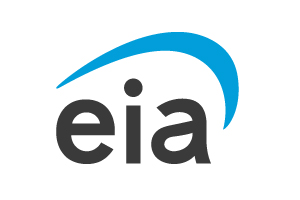BAKU, Azerbaijan, June 17. Tensions in the Middle East continue to rattle energy markets, with analysts warning of heightened volatility in oil prices due to ongoing risks surrounding the Strait of Hormuz — the world’s most vital oil transit chokepoint, Trend reports via the U.S. Energy Information Administration (EIA).
According to a new analysis by EIA, although maritime traffic through the strait has not been halted, the Brent crude benchmark rose sharply from $69 per barrel on June 12 to $74 per barrel on June 13. This price jump, analysts say, reflects the market’s sensitivity to even perceived threats in the region.
“The inability of oil to transit a major chokepoint, even temporarily, can create substantial supply delays and raise shipping costs,” the EIA notes, “potentially increasing world energy prices.”
The Strait of Hormuz handles more than a quarter of global seaborne oil trade and around one-fifth of global oil and petroleum product consumption. In 2024, it also saw about 20% of global liquefied natural gas (LNG) shipments, mostly from Qatar.
Declining flows, mounting risks
Between 2022 and 2024, crude and condensate volumes through the strait dropped by 1.6 million barrels per day (b/d), a decrease only partially offset by an increase in petroleum product shipments. This decline stems in part from multiple OPEC+ production cuts since November 2022, along with increased domestic refining in Gulf countries.
The EIA adds that instability around the Bab al-Mandeb Strait in 2024 also contributed to rerouting. Saudi Aramco diverted crude oil via the East-West pipeline across the Arabian Peninsula to Red Sea ports, avoiding both chokepoints.
“More refining capacity in the Persian Gulf states increased regional demand for crude oil,” the report states, “shifting some flows to local markets within the Persian Gulf.”
Limited alternatives
While Saudi Arabia and the UAE possess infrastructure to bypass Hormuz — including pipelines to the Red Sea and the Gulf of Oman — their spare capacity is limited due to day-to-day usage. The UAE’s Fujairah pipeline and Saudi Arabia’s East-West pipeline together offer about 2.6 million b/d in available alternative transit capacity during a crisis.
Iran’s alternative route — the Goreh-Jask pipeline — remains underused. Though it can handle up to 300,000 b/d, Iranian exports via this route dropped to under 70,000 b/d by mid-2024, with no shipments recorded after September.
Asia Most Exposed
Asia remains the primary recipient of Hormuz oil and gas flows. In 2024, 84% of crude and condensate and 83% of LNG passing through the strait were destined for Asian markets. China, India, Japan, and South Korea accounted for nearly 70% of those oil shipments.
“These markets would likely be most affected by supply disruptions at Hormuz,” the EIA cautions.
With geopolitical tensions showing no signs of easing, energy analysts anticipate continued upward pressure on oil prices and increased market volatility in the months ahead.
“The Strait of Hormuz remains a critical chokepoint with no fully adequate alternatives,” the EIA concludes. “Even short-term disruptions could have global repercussions.”







